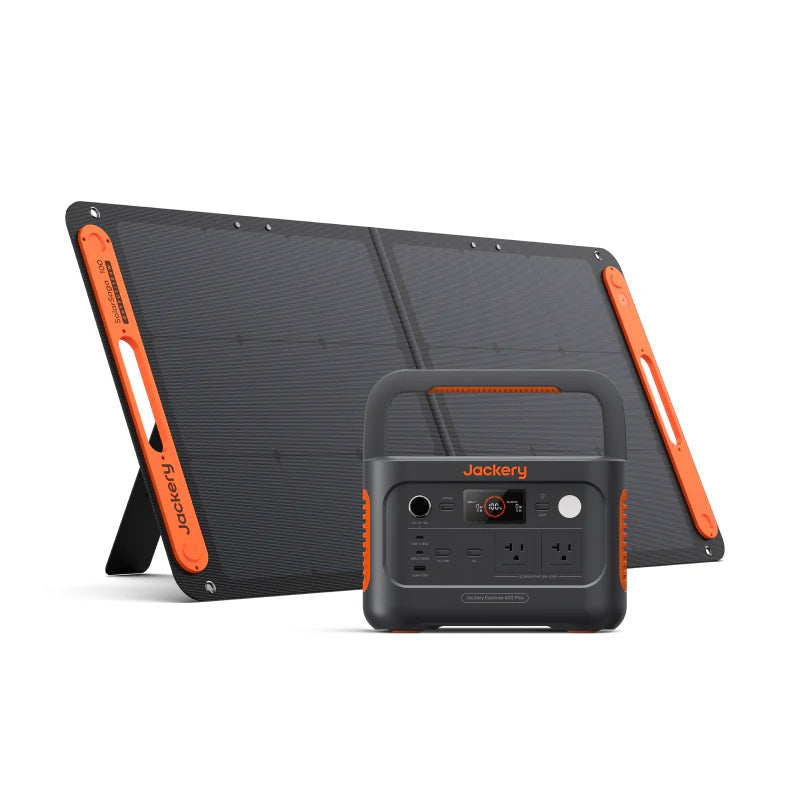How Many Amperes Is A Car Battery? Discover the answer with CARS.EDU.VN! Understanding your car battery’s amperage is vital for optimal performance and longevity. We provide insights into battery capacity and power, offering solutions to keep your vehicle running smoothly. Learn about battery maintenance, how to calculate amps, and explore alternative charging solutions.
1. Decoding Car Battery Amperage: An Essential Guide
A typical car battery boasts a storage capacity ranging from 400 to 1000 amps, contingent on the vehicle’s type and size. Smaller vehicles often feature batteries rated between 400 and 600 amps, while larger vehicles may house batteries capable of storing approximately 1000 amps. You can usually find the amperage rating on the battery itself or by consulting the manufacturer’s website for your car’s specific model. Understanding these numbers is key to ensuring your car operates reliably.
For those seeking alternative methods for charging vehicle batteries, consider Jackery Portable Power Stations. These battery power stations are compatible with most vehicle batteries (excluding electric bikes) when used with the Jackery 12V Automobile Battery Charging Cable. They also offer the convenience of charging other indoor or outdoor appliances, enhancing the comfort of your car road trips. Think of the freedom of powering your devices on the go!
2. Grasping Key Concepts: Amps, Volts, Watts, and Amp-Hours
To truly understand your car battery, it’s crucial to know the definitions of key electrical terms. Let’s break down amps, volts, watts, and amp-hours and explore their significance in the context of car batteries.
2.1 Defining Amps: The Flow of Electrical Current
Amperage, often referred to as amps, is the unit that measures the amount of electricity flowing through an electrical circuit, essentially representing the number of electrons moving through a wire. Car batteries commonly possess an amp rating ranging from 400 to 1000A.
The relationship between amps, watts, and volts is defined by Ohm’s Law:
Amps = Watts ÷ Volts
2.2 Understanding Volts: The Pressure Behind the Current
Voltage represents the pressure that propels the electric current through the wire. In a car’s battery, the voltage typically ranges from 12.6V to 14.4V.
The formula to calculate volts is:
Volts = Watts ÷ Amps
2.3 Demystifying Watts: The Measure of Electrical Power
Wattage serves as an indicator of power and stands as a widely used unit of electricity. It signifies the amount of power consumed by any electrical device. For example, a 12V car battery with an amp rating of 400A will exhibit a wattage of approximately 4800W.
The calculation for watts is:
Watts = Volts × Amps
2.4 Explaining Running Voltage: Maintaining Charge During Operation
When the car’s engine is running, the battery voltage typically elevates to between 13.5 and 14.5 volts. The alternator plays a crucial role in boosting the battery to these elevated levels. This ensures that the battery remains charged while the engine is running.
3. Navigating Car Battery Types and Their Amp Requirements
Car batteries come in various sizes, each designed to meet the specific power demands of different vehicles. The size and type of your car will largely determine the kind of battery you need. Let’s examine how many amps different types of car batteries use.
3.1 Understanding Amp-Hour Ratings: Capacity and Longevity
Some car batteries feature an amp-hour rating alongside amps. While related, these two units differ in their measurement. The amp-hour rating assesses the car battery’s capacity, indicating the amount of amps a car can receive in one hour before the battery reaches its cut-off voltage.
While the amp rating reflects the maximum amount of amperes in the car battery, the amp-hour rating specifies how long the battery can sustain that current. Small cars typically feature a 40Ah battery, whereas larger vehicles may have a 50Ah battery.
3.2 Exploring Oversized Batteries: Enhanced Power for Demanding Vehicles
Certain oversized vehicles opt for batteries with a capacity of approximately 75Ah. These ratings generally apply when the voltage is 12V. Altering the voltage from 12V to 6V can impact the amp rating. A 6V battery typically delivers a maximum current of 2 amps.
3.3 Cold Cranking Amps (CCA): Powering the Engine Start
The number of cold cranking amps (CCA) in a car battery influences its power output. CCA represents the battery’s ability to start an engine in cold temperatures. On average, most cars feature CCA ratings ranging from 250 to 600 CCA. The engine size plays a significant role in determining the required CCA.
Here’s a table summarizing the typical voltage, amp hours, and wattage of different car batteries:
| Car Battery Sizes | Car Battery Wattage | Volts | Amp Hours |
|---|---|---|---|
| Small Car | 480W | 12V | 40Ah |
| Large Vehicle | 600W | 12V | 50Ah |
| Oversized Vehicle | 900W | 12V | 75Ah |




4. The Startup Surge: How Many Amps Does a Car Battery Draw on Ignition?
The number of amps a car battery draws on startup is directly influenced by the vehicle’s engine type, capacity, and size. In general, car batteries consume between 100 and 400 amps during cranking. The engine needs an initial surge of 2-3 times the rated amps for a few seconds, which means car batteries might need 200 – 1200 amps on startup. Certain large car engines might even require around 1000 amps during cranking.
You can estimate the starting amps using the following formula:
Startup Amps = Running Amps × (2-3)
5. Mastering the Calculation: How to Determine Your Car Battery Amps
The exact amount of amps a car requires can fluctuate depending on various factors. For instance, operating more systems or power-intensive features like the HVAC system will increase amp consumption and accelerate battery drain. One common method for assessing car battery amps involves measuring Cold Cranking Amps (CCA). The car’s CCA can range from 400 to 1000 amps, typically indicated on the battery. Let’s explore different methods to calculate your car battery amps.
5.1 Method 1: Leveraging Manufacturer Details for Accurate Specs
Most car batteries clearly display their amp ratings in a visible location, eliminating the need for manual calculations. If the rating isn’t immediately apparent on the vehicle, consider consulting the manufacturer’s website for your car’s specific model. Alternatively, seeking advice from a professional mechanic can provide insights into the amp rating of your battery and vehicle.
5.2 Method 2: Deriving Amps from Ohms Using Ohm’s Law
In situations where you lack knowledge of the total capacity and current capacity of the car battery, continuous charging without this information becomes risky. Therefore, calculating car battery amps becomes essential. To gauge the amps of the car battery, you’ll need to ascertain the ohm rating first. Here’s the formula to calculate amps from the ohm rating:
Amps = Volts ÷ Ohms
5.3 Method 3: Employing a Multimeter for Precise Measurement
A multimeter stands out as a versatile instrument capable of measuring voltage, amps, and resistance. Integrate the multimeter into the circuit and activate the battery power to assess the current flowing from the car battery to the load. This method offers a direct measurement of the amperage.
6. Maximizing Efficiency: Tips to Optimize Car Battery Charging
To save on electricity bills, consider alternative charging methods that don’t rely on the grid. These methods can significantly reduce your environmental impact while also saving you money. Here are a few ways to consider:
- Maintain Your Car Battery: Regularly inspecting your car battery ensures that it is charging correctly and efficiently. A well-maintained car battery requires less frequent charging, which translates to lower energy consumption. Schedule routine check-ups at CARS.EDU.VN to keep your battery in top condition.
- Charge During Off-Peak Hours: Many electricity providers offer discounted rates during off-peak hours. By charging your car battery during these times, you can reduce the cost per unit of electricity, ultimately lowering your electricity bill. Check with your local provider for specific off-peak hours.
- Avoid Trickling: While trickle chargers are designed to slowly charge a battery over an extended period, they can contribute to higher electricity bills if left connected unnecessarily. If you don’t need to keep the car battery charged at all times, avoid leaving it on a trickle charger.
- Invest in Solar Energy: Harnessing the power of the sun offers a sustainable way to charge car batteries without drawing electricity from the grid. Jackery Solar Generators are designed to supply safe power to car batteries when you’re away from power outlets. These solar solutions can also charge other household appliances, further reducing your monthly electricity bills.
7. Solar Generators: A Sustainable Solution for Car Battery Charging
When faced with a dead car battery in a remote location, having a reliable power source is essential. Jackery Solar Generators offer a portable and sustainable solution. These solar-powered generators can charge car batteries (excluding electric bikes) using the Jackery 12V Automobile Battery Charging Cable.
While Jackery Portable Power Stations cannot jumpstart your car, they excel at charging car batteries efficiently. Jackery’s foldable solar panels can be positioned under direct sunlight to capture and convert solar energy into DC electricity. This DC electricity is then routed through the portable power station’s pure sine wave inverter to convert it into AC electricity, suitable for charging appliances and car batteries.
If you are looking for the right solar generator that can meet the wattage needs of car batteries, here are the three options to check out:
7.1 Jackery Solar Generator 600 Plus: Compact and Efficient
The Jackery Solar Generator 600 Plus presents a compact and portable charging solution perfect for various car battery types. It’s an ideal choice for those planning short camping trips to remote locations where access to power is limited. This small generator boasts a compact design that easily fits into the vehicle’s rear compartment.
7.2 Jackery Solar Generator 1000 Plus: Versatile Power for Weekend Adventures
For weekend getaways, the Jackery Solar Generator 1000 Plus offers a reliable charging solution for powering car batteries and other essential devices. It is capable of charging 99% of household or outdoor appliances for extended periods, ensuring you have ample power throughout your trip. Additionally, it serves as an emergency solar battery backup during power outages or blackouts, providing peace of mind in unforeseen circumstances.
7.3 Jackery Solar Generator 2000 Plus: High-Capacity Backup for Extensive Needs
The Jackery Solar Generator 2000 Plus stands out as a high-capacity battery backup solution designed to charge most household and outdoor appliances, including car batteries. As a whole-home battery backup, it features a pull rod, double wheels, and an ergonomic design, facilitating easy transportation. Its expandable nature allows users to extend the battery capacity from 2kWh to 24kWh with the addition of the Jackery Battery Pack 2000 Plus.
Here’s a comparison table of Jackery Solar Generators and their car battery running times:
| Jackery Products | Capacity & Output Watts | Car Battery Running Time |
|---|---|---|
| Jackery Solar Generator 600 Plus | Capacity: 632Wh Rated Output: 800W | Small Car (480W) = 1.1H Large Vehicle (600W) = 53 minutes |
| Jackery Solar Generator 1000 Plus | Capacity: 1264.64Wh Rated Output: 2000W | Small Car (480W) = 2.2H Large Vehicle (600W) = 1.7H Oversized Vehicle (900W) = 1.1H |
| Jackery Solar Generator 2000 Plus | Capacity: 2042.8Wh Rated Output: 3000W | Small Car (480W) = 3.6H Large Vehicle (600W) = 2.8H Oversized Vehicle (900W) = 1.9H |
8. Addressing Common Questions: FAQs About Car Battery Amps
To help you better understand car battery amps, here are some frequently asked questions:
8.1 How many amps are in a 12-volt car battery?
A 12-volt car battery typically supplies 30–50 amps but can produce as much as 600 amps. The average car battery has a capacity of nearly 48 amp hours (Ah), which means that when fully charged, it can provide 1 amp for 48 hours. A higher Ah rating indicates a larger capacity and longer endurance.
8.2 Is a car battery 12 amp or 2 amp?
Most car batteries are 12-amp batteries that can produce as much as 600 amps. The exact amperage can be found on the battery or on the manufacturer’s website. Always check the specifications to ensure you have the correct information for your specific battery.
8.3 How many amps for a dead car battery?
Most cars require 400 – 600 CCA to start the engine. However, the number of amps needed to jumpstart a car battery depends on several factors, including the engine’s size, the battery’s age and condition, and the climate. Colder temperatures often require more amps to start a car.
8.4 How do I check the amps on my car battery?
A digital multimeter can measure a car battery’s amps, volts, and ohms. You can set the multimeter to calculate DC electricity and connect it in series between the negative terminal and the vehicle’s negative cable. This will give you an accurate reading of the amperage.
9. Conclusion: Empowering Your Car Battery Knowledge
Understanding how many amps a car battery is ensures you avoid overcharging or causing damage. Calculating amps and amp hours allows for effective charging, extending the battery’s lifespan. Jackery Solar Generators offer ideal solar-powered solutions for charging car batteries (excluding electric vehicles) using the Jackery 12V Automobile Battery Charging Cable. By harnessing solar energy, you eliminate the need for power outlets in remote areas. For more in-depth information and expert advice on car batteries and maintenance, visit CARS.EDU.VN. We are here to help you keep your vehicle running smoothly!
Are you struggling to find reliable car repair services or lacking knowledge about routine maintenance? At CARS.EDU.VN, we offer detailed information on car care, repair services, and in-depth car reviews to help you make informed decisions. Contact us at 456 Auto Drive, Anytown, CA 90210, United States, or reach out via WhatsApp at +1 555-123-4567. Visit our website at cars.edu.vn for more information.
Disclaimer:
The runtime mentioned for appliances powered by Jackery is for reference only. Actual runtime may vary under different conditions. Please refer to real-world performance for accurate results.
Shop products from this article
Jackery Solar Generator 600 Plus
Jackery Solar Generator 1000 Plus

